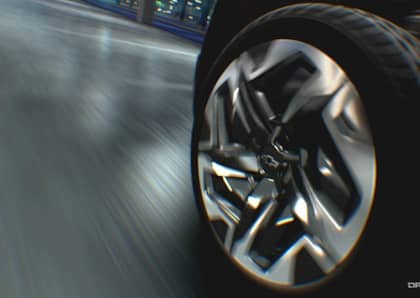Why Did GM's Excellent Quadrasteer Full-Size Pickup Four-Wheel Steering System Simply Disappear?
The concept of four-wheel steering feels like a no-brainer for full-size pickups. Although using both the front and the rear axles to help change direction has been a staple for sports cars since at least the 1980s, the unique challenges associated with maneuvering a large truck would seem to make a compelling case for Detroit to deliver it as an option on larger, more task-focused vehicles, too.
And yet there's only ever been one truck builder from the Big Three to actually experiment with four-wheel steering on its pickups and SUVs. Dubbed 'Quadrasteer,' this unique system would be introduced in the early 2000s for the briefest of periods by General Motors on its Chevrolet and GMC full-size models before disappearing forever.

Why didn't Quadrasteer catch on? The answer will be familiar to anyone who's seen automakers bungle breakthroughs before.
Good Tech, Good Timing
GM first became interested in four-wheel steering for its trucks towards the end of the 1990s while the GMT 800 platform was being designed to replace the successful, but longstanding GMT 400 full-size pickup and sport-utility chassis. Working together with Delphi, the company engineered a sophisticated steer-by-wire rear axle that fit snugly under the Chevrolet Silverado, the GMC Sierra, and three-quarter ton versions of the Suburban and Yukon XL.

How Did it Work?
Delphi's Quadrasteer was built around a Dana 60 axle and could be controlled electronically from inside the cab by the driver. When set to 'Four-Wheel Steer' mode, a set of tie rods were actuated by an electric motor through a rack-and-pinion setup to turn the rear wheels as much as 15 degrees out of phase with the fronts when vehicle speed was below 45 mph. This dramatically reduced the turning radius of Chevy and GMC trucks from 47 feet to 37 feet, or roughly 22 percent, giving it nearly the same agility in a tight space as a typical family sedan of the era.

Above 45 mph the rear wheels moved in phase with the fronts by as much as 5 degrees in order to improve stability on the highway, with a small zone of zero movement as one approached the 45 mph point and the computer controller switched over from its counter-steer programming. There was also a 'Towing' mode that restricted low speed rear-wheel steering to 12 degrees to prevent drivers from accidentally nosing-in to their own trailers. It was also possible to turn the system off completely.

Although Quadrasteer added nearly 300 lbs of weight to the GMT 800 trucks, as well as an extra five inches of fender coverage at the rear of the vehicle, it boosted towing capacity by a hefty 2,300 lbs. It was also impossible to deny just how nimble the rear-steer trucks felt in comparison to their traditional brethren.
What Went Wrong?
If Quadrasteer was such a compelling option, then why was it nearly ignored by the GM pickup faithful? In a word: cost. When four-wheel steering appeared for the 2002 model year it came with a $5,600 sticker shock, and that's if your dealer didn't feel the need to tack on a mark-up of a few thousand extra. The silver lining? If you were an early adopter who plunked down big money for the very first Sierra Denali, you got Quadrasteer as standard equipment.

Overpricing four-wheel steering turned out to be a major mistake on GM's part. Quadrasteer was incredibly expensive in an era where luxury pickups were only beginning to find their footing, and despite its availability on heavy duty models popular with the towing crowd neither Chevrolet nor GMC did a good job of educating its buyers about why they should be interested in the technology in the first place.
In the face of slow sales GM slashed the cost of four-wheel steering to a more palatable $2,000, then cut it by a further 50 percent in 2004. Unfortunately, the damage had already been done. In its best year, just over 17 percent of buyers would check the box next to Quadrasteer, and after 2005 it had disappeared completely from the order sheet.
Time For A Comeback?
Today, Quadrasteer lives on among diehard Chevrolet and GMC owners who do what it takes to keep the system running in top shape. Although General Motors initially did a poor job of producing replacement parts for it after its initial dealership run, a number of aftermarket companies have stepped up to provide third-party components. Generally reliable, most of these systems are still pulling duty for the handful of drivers knowledgeable enough to seek it out on the second-hand market.

The real Quadrasteer question is why hasn't any other truck builder taken a chance on a similar setup? The benefits of four-wheel steering are clear, there are no technological hurdles to overcome, and full-size buyers are by now so accustomed to paying lofty surcharges for well-equipped trucks that something like four-wheel steering would seem to make sense. With reports that the current-generation F-150 may reintroduce a rear-steer setup in the near future, it's possible that GM's original idea may finally get a chance to shine (and hopefully, be marketed just a little bit better) under another manufacturer's banner.
More From Driving Line
- Want more cool Chevy truck history? Check out this feature on the '88-98 GMT 400 pickups.











